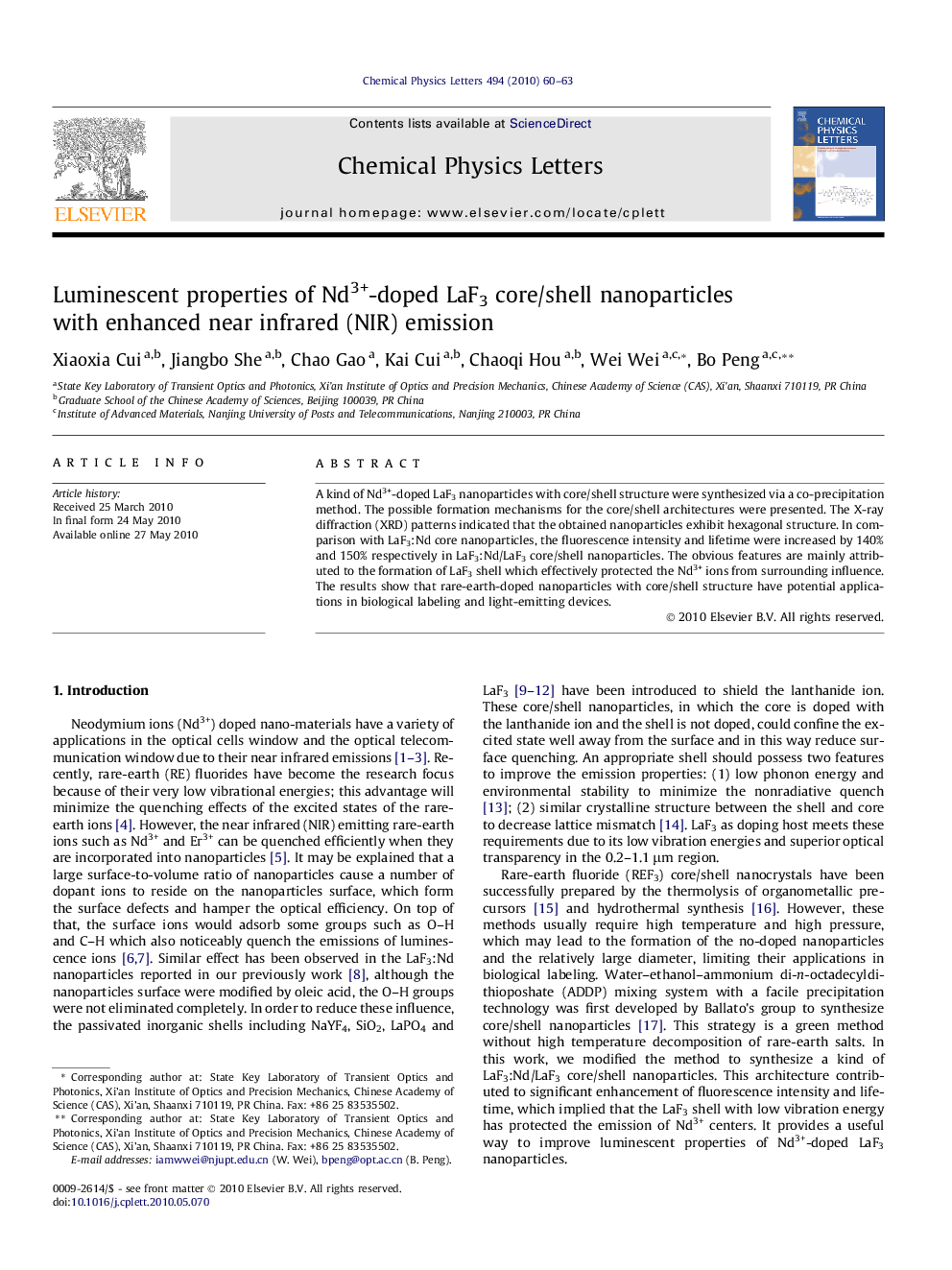| Article ID | Journal | Published Year | Pages | File Type |
|---|---|---|---|---|
| 5386162 | Chemical Physics Letters | 2010 | 4 Pages |
A kind of Nd3+-doped LaF3 nanoparticles with core/shell structure were synthesized via a co-precipitation method. The possible formation mechanisms for the core/shell architectures were presented. The X-ray diffraction (XRD) patterns indicated that the obtained nanoparticles exhibit hexagonal structure. In comparison with LaF3:Nd core nanoparticles, the fluorescence intensity and lifetime were increased by 140% and 150% respectively in LaF3:Nd/LaF3 core/shell nanoparticles. The obvious features are mainly attributed to the formation of LaF3 shell which effectively protected the Nd3+ ions from surrounding influence. The results show that rare-earth-doped nanoparticles with core/shell structure have potential applications in biological labeling and light-emitting devices.
Graphical abstractLaF3:Nd/LaF3 core/shell nanoparticles were synthesized via a co-precipitation method. This architecture contributed to significant enhancement of fluorescence intensity and lifetime, which implied that the LaF3 shell provides a physical barrier between the optically active core and the surrounding medium. It provides a useful way to improve luminescent properties of Nd3+-doped LaF3 nanoparticles.Download high-res image (42KB)Download full-size imageResearch highlights⺠A strategy to preparing LaF3:Nd/LaF3 core/shell nanoparticles by a facile method was developed. ⺠The formation mechanisms for the core/shell architectures were discussed. ⺠The luminescence properties of LaF3:Nd core and LaF3:Nd/LaF3 core/shell nanoparticles were studied.
